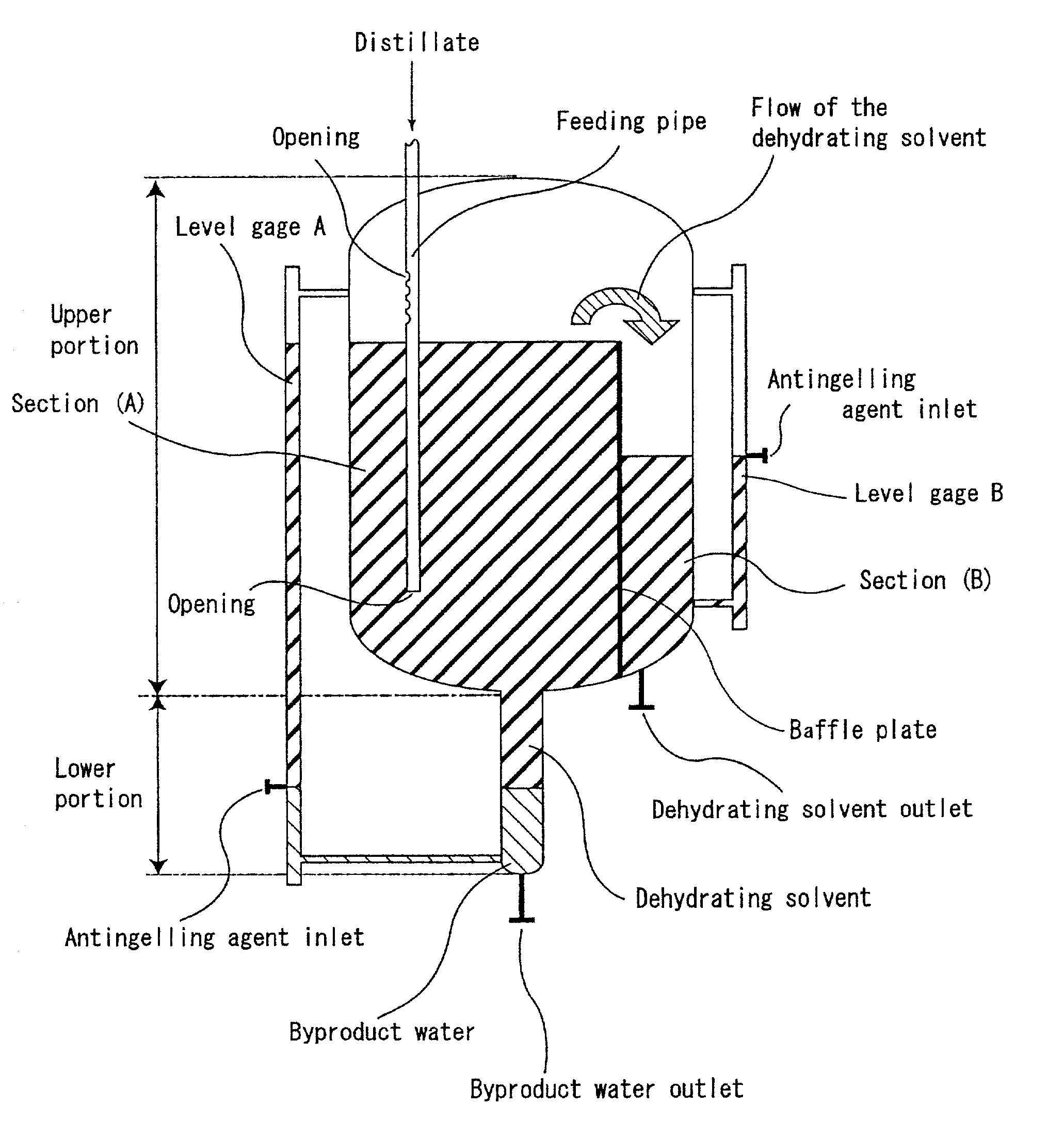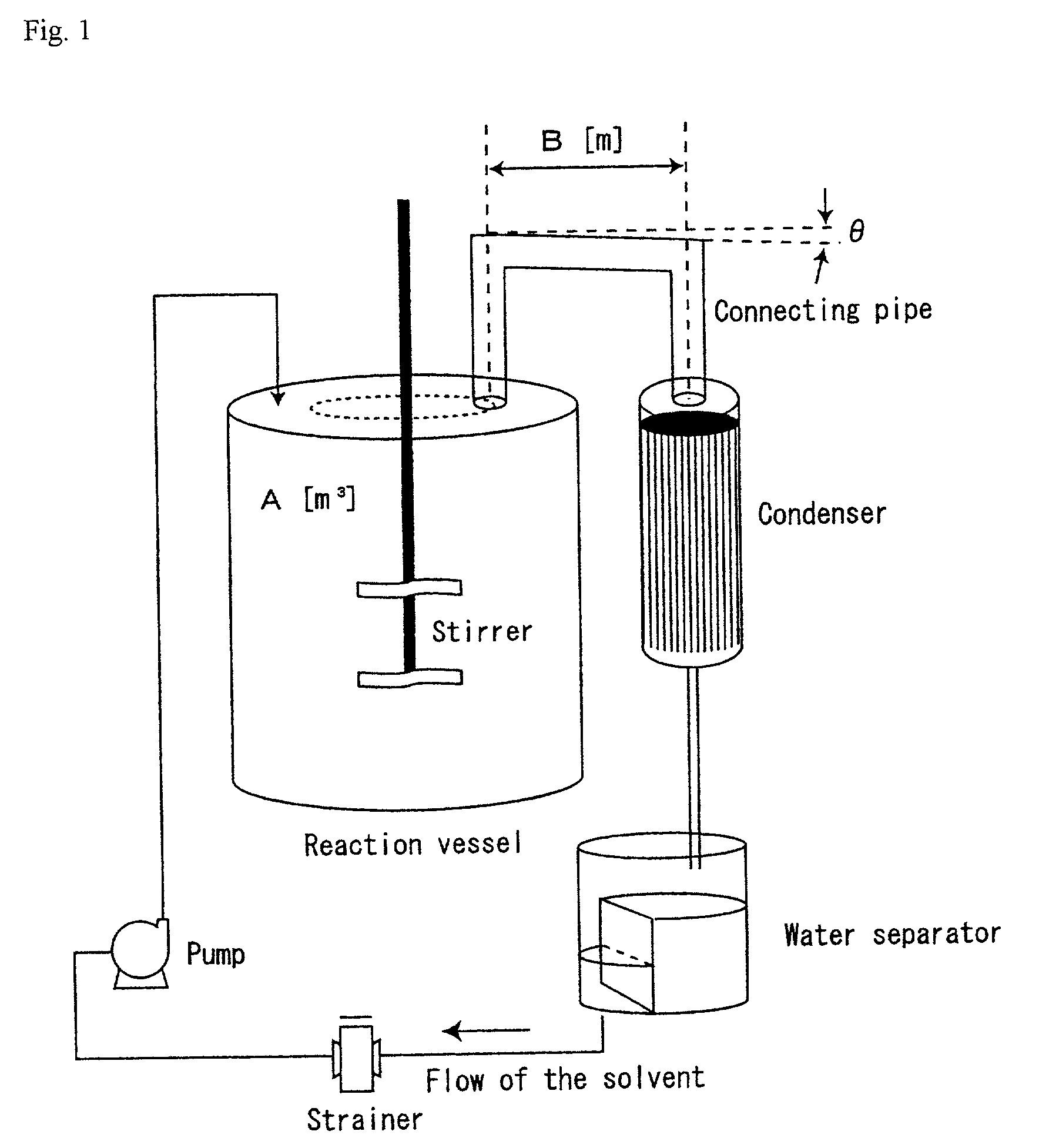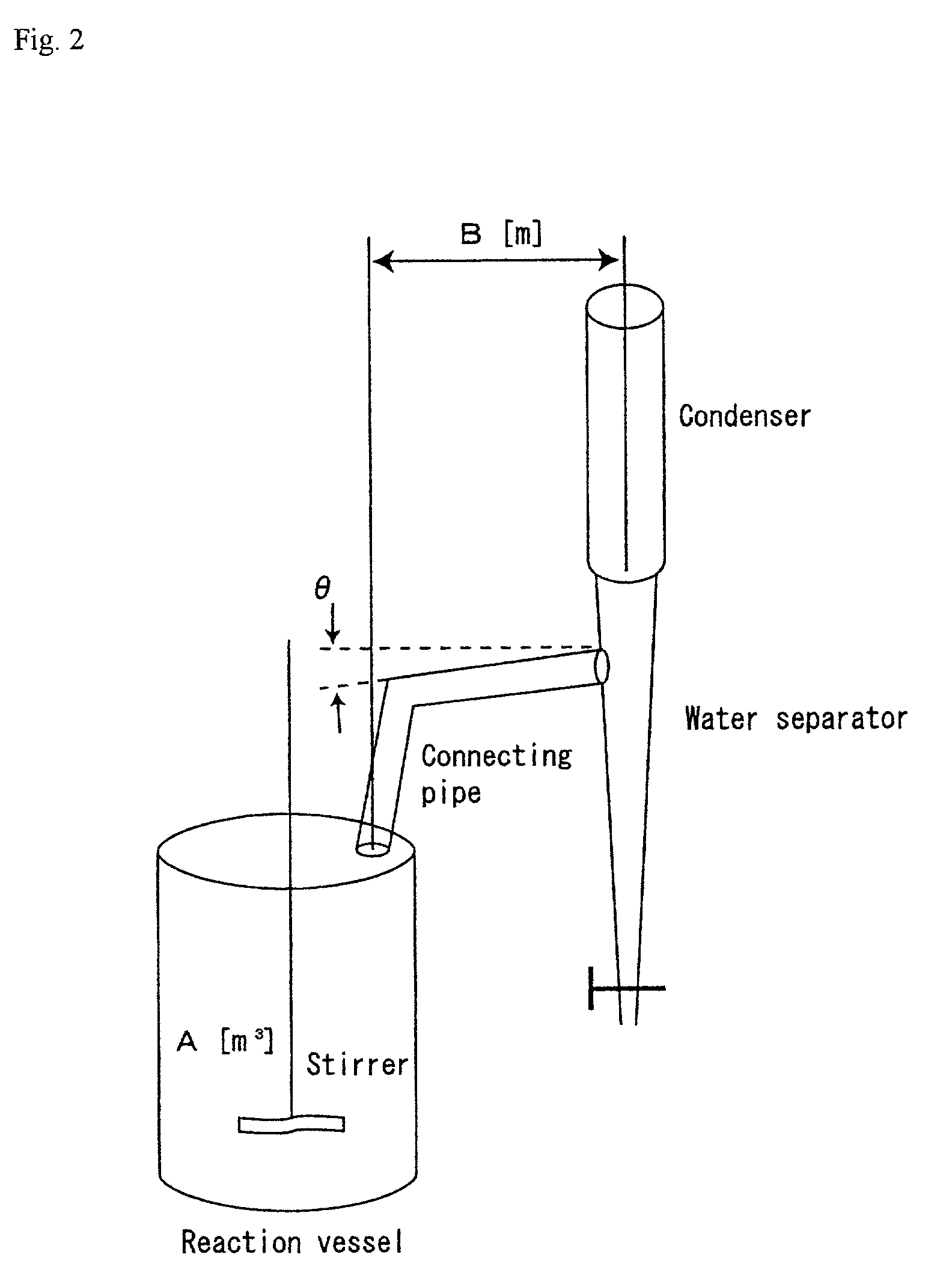Production process for product of dehydration reaction and apparatus used for the production
a technology of dehydration reaction and production process, which is applied in the direction of separation process, chemical/physical/physical-chemical stationary reactor, chemical/physical process, etc., can solve the problems of deterioration of performance characteristics or quality, troublesome production step, and formation of gel-like matter during the production of dehydration reaction product, so as to prevent the bumping of reaction solution and prevent leakage. , the effect of stabilizing the interfa
- Summary
- Abstract
- Description
- Claims
- Application Information
AI Technical Summary
Benefits of technology
Problems solved by technology
Method used
Image
Examples
example 1
Dehydration Reaction Product Production Example 1
[Esterification]
[0266]A cylindrical reaction vessel equipped with a thermometer, a stirrer, two byproduct water separators and two cooling pipes (condensers) was charged with 18,500 parts of methoxypoly(n=25) ethylene glycol, 3,030 parts of methacrylic acid, 240 parts of paratoluenesulfonic acid monohydrate in powder form, 5.5 parts of phenothiazine and 1,090 parts of cyclohexane, and the esterification reaction was carried out at a reaction temperature of 115° C. The reaction vessel had an outside diameter of 30 cm (heated on an oil bath), a height of 50 cm and a capacity (A) of 0.03 m3 and had a structure such that a connecting pipe having an inside diameter of about 2 cm could be connected thereto at a site 10 cm distant from the central axis of the reaction vessel. Each condenser used was a commercially available glass-made Dimroth condenser (condenser pipe length 40 cm; product of Shibata Kagaku Kikai Kogyo). The byproduct water ...
example 2
Dehydration Reaction Product Production Example 2
[Esterification]
[0272]A cylindrical reaction vessel equipped with a thermometer, a stirrer, a byproduct water separator and a cylindrical reflux cooling pipe (condenser) and having an external jacket was charged with 36,376 parts of methoxypoly(n=25) ethylene glycol, 10,760 parts of methacrylic acid, 1,470 parts of a 70% aqueous solution paratoluenesulfonic acid hydrate, 11 parts of phenothiazine and 2,344 parts of cyclohexane, and the esterification reaction was carried out at a reaction temperature of 115° C. The reaction vessel had an outside diameter of 3.6 m (including the jacket thickness), a height of 3.8 m and a capacity (A) of 30 m3 and had a structure such that a connecting pipe having an inside diameter of 0.2 m could be connected thereto at a site 1.15 m distant from the central axis of the reaction vessel. The condenser used was a vertical multitubular heat exchanger (fixed tubesheet type) having an outside diameter of 0....
example 3
[0274]A 80% aqueous esterification product solution (M3) was obtained in the same manner as in Example 2 except that no gradient was given to the connecting pipe joining the reaction vessel to the column top portion of the condenser. The aqueous solution (M3) obtained was transferred to another container prepared separately. The above procedure was repeated with 80 batches and, thereafter, the inside of the condenser and of the connecting pipe was examined. Only slight gelation was noticed upon visual observation but the amount thereof was not at such a level that might cause blocking or like problems during the repetitions of 80 batches. The aqueous solution (M3) was analyzed by GPC, whereupon any peak supposedly due to a high-molecular substance presumable as a gel precursor was not confirmed. The relation between B and B3 / A in this case is shown in FIG. 3.
PUM
| Property | Measurement | Unit |
|---|---|---|
| diameter | aaaaa | aaaaa |
| diameter | aaaaa | aaaaa |
| diameter | aaaaa | aaaaa |
Abstract
Description
Claims
Application Information
 Login to View More
Login to View More - R&D
- Intellectual Property
- Life Sciences
- Materials
- Tech Scout
- Unparalleled Data Quality
- Higher Quality Content
- 60% Fewer Hallucinations
Browse by: Latest US Patents, China's latest patents, Technical Efficacy Thesaurus, Application Domain, Technology Topic, Popular Technical Reports.
© 2025 PatSnap. All rights reserved.Legal|Privacy policy|Modern Slavery Act Transparency Statement|Sitemap|About US| Contact US: help@patsnap.com



